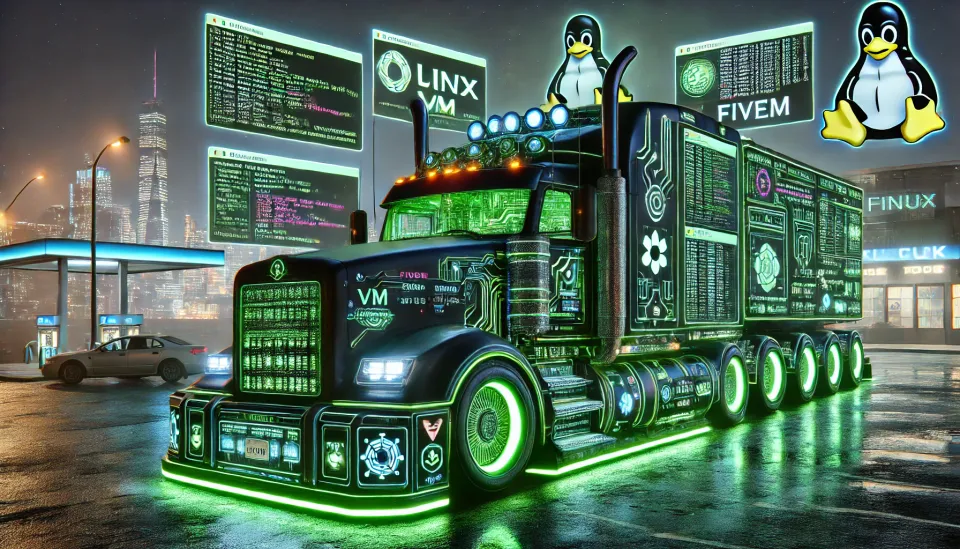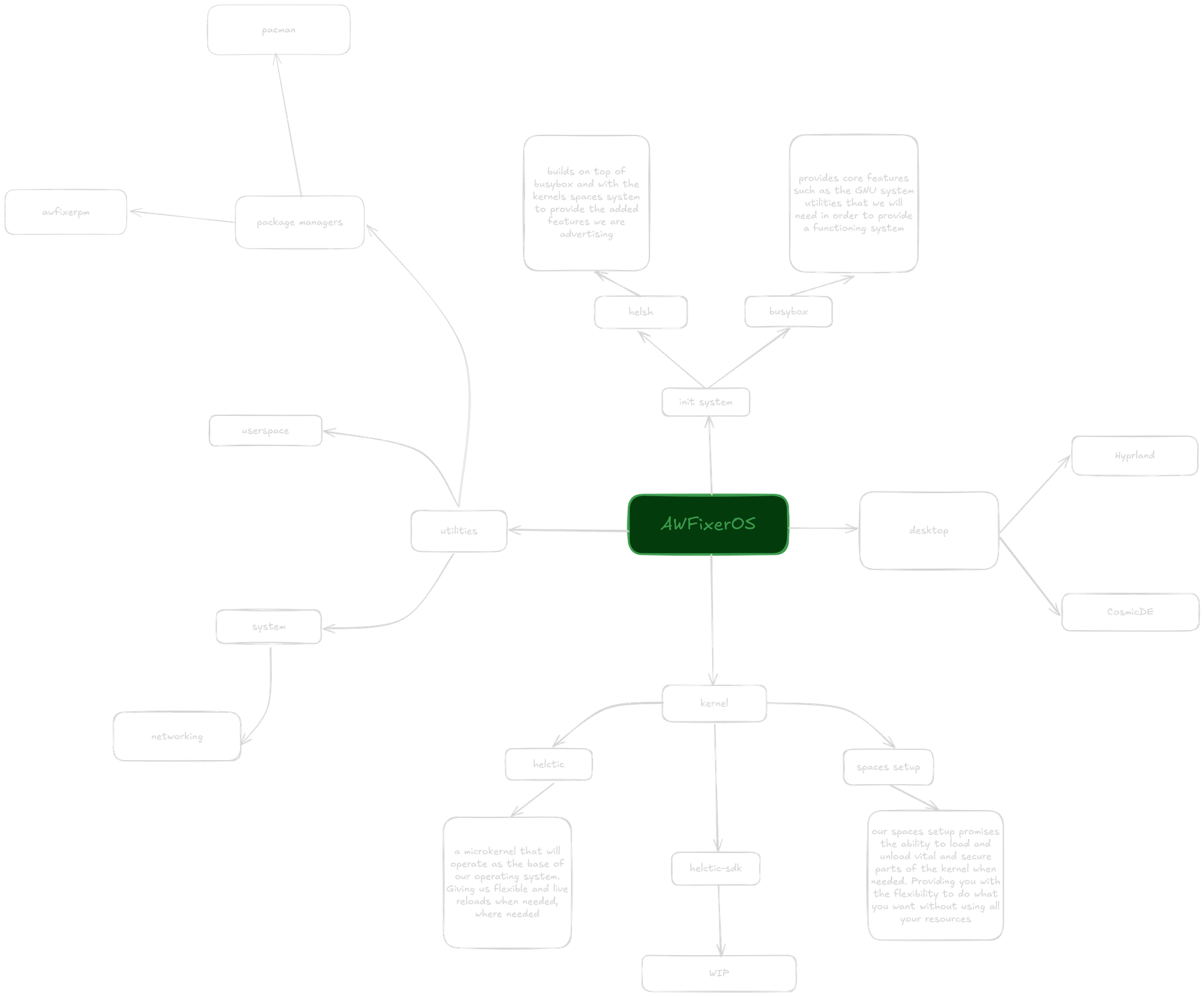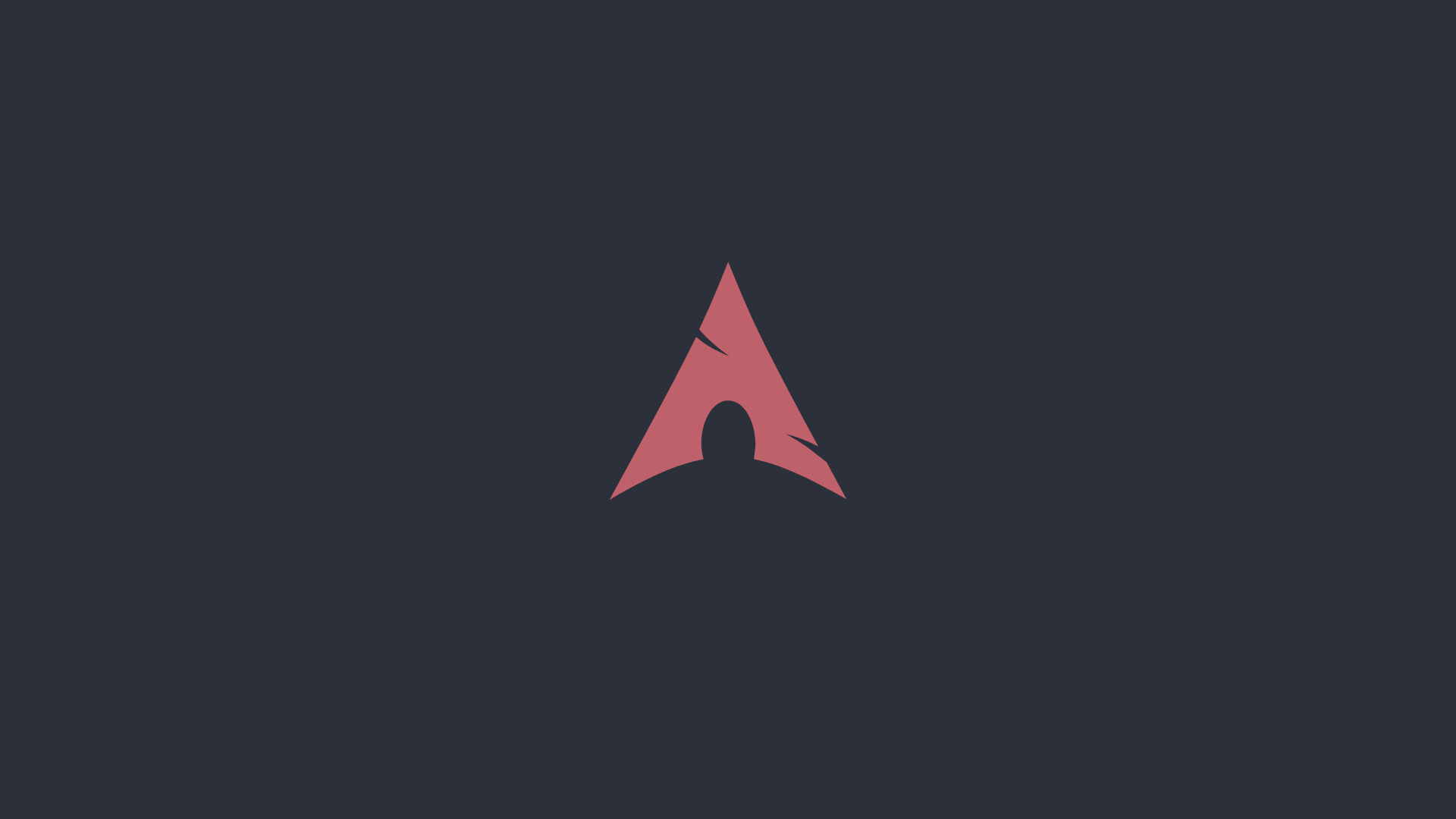Introducing AWFixerOS

This is going to be a very long post, lots to cover here

in the beginning...
was an operating system of legend, known simply as AxylOS, based on ArchOS, and one of the best of its time, then came the day when that operating system started to go downhill, it lost its developers, it was going, but from the ashes came 2 operating systems
ExodiaOS, and now, AWFixerOS
if you want to support AWFixer OS then please consider becoming a paying member of the blog or discord server, we will love you forever
What is AWFixerOS
and what makes it so groundbreaking?
AWFixerOS is a combination of our dreams and our research bundled into one fantastic product. For years we have been thinking about building the best operating system, and in the background, we have been doing a lot of work on it. We have been looking into the new and the old, the high-quality and products we could bring back from the dead, the public's needs and the public's wants, and even company needs and company wants. We are happy to announce that we have concluded our research and we are going to begin work on AWFixerOS over the next week or so.
What are some of the key differences between AWFixerOS and any of the Operating Systems before it?
To be honest, there are a lot of differences. We are not going to be using the Linux Kernel, rather we are going to be using a fork of the RedoxOS Kernel, as well as a custom init system and many other things that have not been seen in the wild before. below is a list of the key parts of AWFixerOS and the purpose that they serve:
Helctic: helctic is a fork of the RedoxOS kernel that we are customizing to work with our new operating system layout. By default it will contain no drivers outside of what it needs to communicate with core parts of the hardware and will support live-reloading many parts of the operating system, increasing security and removing the need to reboot the system after most changes you make.
Helctic Spaces: This is going to be the bread and butter of our design, as the spaces setup will allow things to be live loaded and unloaded from the operating system. This will allow you to extend its functionality when needed and draw it back in to conserve your resources when it is not. The spaces setup will support loading in drivers, anti-cheat software, translation software for running software natively even when it is from other architectures, and more as we find other ways to use it.
Helctic SDK: This will be the developer interface for the Hectic Spaces setup, allowing you to make calls that will allow your products to be loaded and unloaded from the spaces setup without having to directly interact with the kernel or other protected parts of the operating system. We intend to write the internal API for Helctic in Lua allowing for you to write your features in any language you want and add a simple script to make it compatible with Helctic Spaces.
Busybox: we are working on a modified version of busybox allowing for a posix-compliant environment that will assist in loading heavier parts of the operating system efficiently and understandably. We believe that the usage of even a modified busybox will speed up the development process significantly. We do have it on the roadmap to eventually outgrow the need for busybox, we do not have a timeline for that yet.
Helsh: Helsh will be our custom init system, designed to work seamlessly with Helctic and be the best PID 1 that you have ever worked with. In keeping with the UNIX mentality, we will be using a separate non-dependant utility to manage things like networking and cron jobs, though we do plan on including a cron daemon in our setup as we know there are some really basic yet cool things that you can do with a good cron daemon.
Hyprland: We plan on throwing some people for a loop and will include Hyprland as the default "Desktop" in AWFixerOS, as well as a nice configuration made by someone who goes by end-4 that we really like. We feel that Hyprland + the Dots-Hyprland configuration makes for a very feature-complete and flexible desktop environment that can be used by anyone for basically any reason.
CosmicDE: We also plan on adding support for the CosmicDE as an option during setup as we like the company and the way that cosmic is maturing a lot and feel this will be a great way to show support for cosmic and system76 as a whole.
We will make more posts about the individual and various groups of the AWFixerOS Components. We are really proud of the ideas, work, research, and potential of AWFixerOS
What are the usecases for AWFixerOS
we know that a lot of people have that question, and we have some answers for you :)
Personal Use Cases
There are a lot of personal use cases for AWFixerOS, it would be great to breath life back into old hardware, and extend the life of your current hardware. It will serve as a secure and functional alternative to Windows in a way that Linux never has.
Business Use Cases
We plan on building in things like VPN Daemons and Nix so that you will be able to securely and declaratively manage a remote fleet of hardware using a white-label version of AWFixerOS
Gaming Use Cases
We are really happy about this one. We plan on making a framework for using our Helctic Spaces to make a really good and easy-to-configure anti-cheat that gaming companies or even Valve (steam) can use. Maybe we will make this a default SDK setting in the future.
Development Use Cases
This is one we are really proud of, by default AWFixerPM our in-house package manager will have support for managing versioned development toolchains, and with dev box and other containerization tools your ability to use AWFixerOS development is uncapped and unlimited (support for direct Mac development on the books)
Government Use Cases:
The Government use cases, all though very similar to the Business Use cases, does have a few key differences. We will provide support for governments to personalize the white-labled version of AWFixerOS to exactly what they need. Whether that is running containerized workloads that power critical infrastructure or simply being a POS operating system that has to work 24/7, we are working on predefined structures for the OS to meet those use cases.
What went into the design of AWFixerOS
because trust me, it was a lot of work

TL;DR - A lot of Work :)
What originally created the idea for AWFixerOS is what I call "autistic rage quits." you see, as someone who has autism, I can tell you that there are some things in this world that I have been forced to accept just are, and will never change. Things like Github, but then Github was bought by Microsoft, or Gitlab, which seems like a viable alternative to github.
One thing that I refused to accept is that I would always be stuck with a choice between the intrusive nature of Windows, the closed-off nature of MacOS, or the unsupportive nature of Linux. This simply would not work. So an idea emerged, and I began to think about what I would want to build into my own Operating system. At first, I toyed with the idea of basing it on Linux, using Arch Linux as a base, and then I thought about using Fedora, maybe an Atomic base? No, that would never work. The reason being the monolithic structure of the Linux Kernel was so stuck in its ways that I would never get what I wanted, even needed out of it. I would have to forge something entirely new for it to be what I wanted.
So the hunt began. I started looking into the various things that I would need to make an operating system in a class all of its own. One that not only met my standards but also those of Governments and businesses around the world. It had to be secure, efficient, and modifiable to a degree that was not currently available on the open market.
So I began to do some research, I was pretty quiet about it, as I did not want to let on what I was doing immediately and cause any issues because of that. What I found is really quite impressive. The list of things that people have issues with, and the complicated and extensive workarounds some people have made in order to get thru these issues is indeed a sight to behold. I heard that there is no real arm support in consumer land for Linux, I heard that Windows is too chunky for developing with it on a resource-light machine, I heard that it is way too restrictive to only be able to develop Mac apps on Macs, and everything in between. It was a truly eye-opening experience for me.
This information I have been gathering is one of the biggest reasons behind just how different AWFixerOS will be, and our reasoning for everything that we do on the operating system as a whole.
Do you have any ideas on how to make the best operating system ever? well, we are open to any ideas that will help us, don't be afraid to click the button for our discord below and we will see how you can help us, eh?
if you want to check out how you can contribute then make a visit to our Github and see what you see that you might be able to help with 😄

Wallpaper Options for AWFixerOS








wallpaper options for AWFixerOS
we are always looking for wallpaper options, you can open a PR with them in the following Repo



